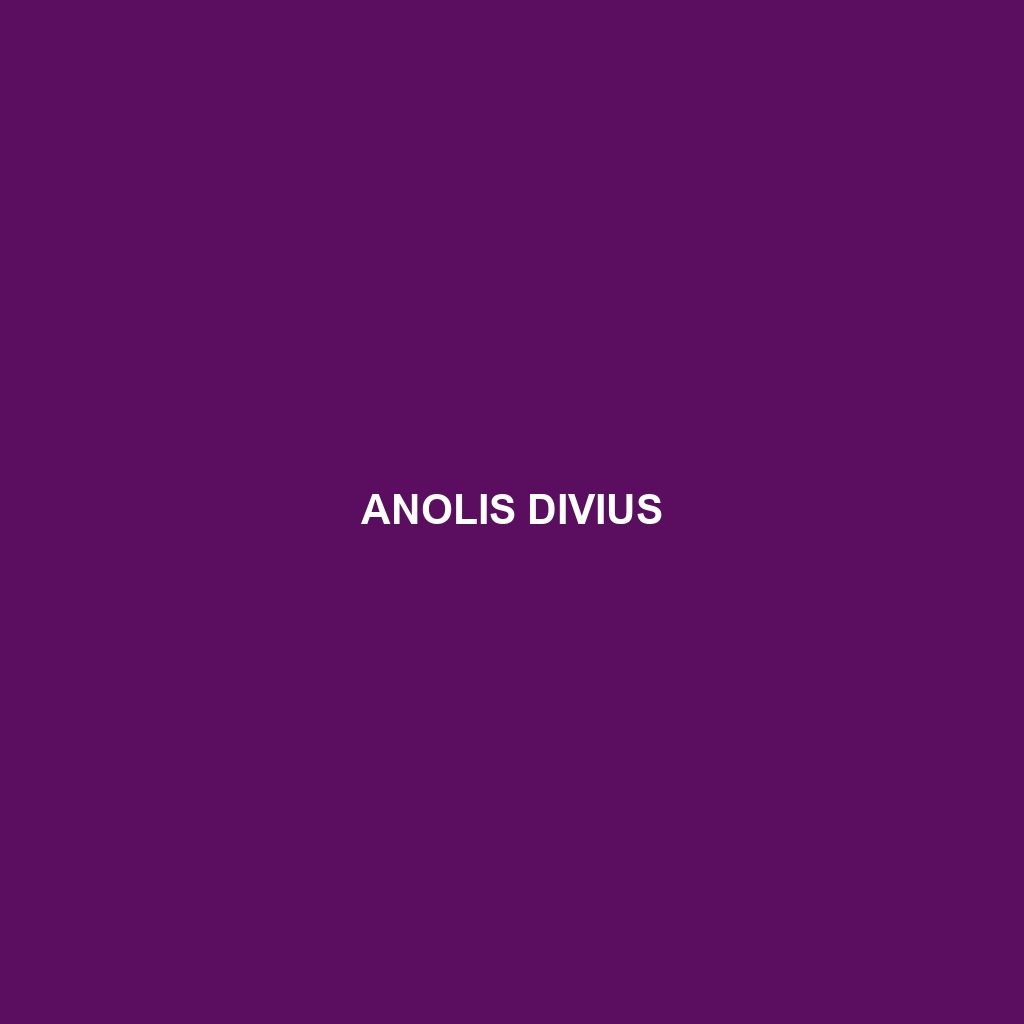Anolis divius Species Description
Common Name: Anolis divius
Scientific Name: Anolis divius
Habitat
Anolis divius, commonly known as the divius anole, primarily inhabits the lush tropical rainforests of the Caribbean Islands, particularly Dominica and surrounding areas. This species often thrives in humid environments and can be found in both lowland and mountainous regions, where it prefers to dwell in trees and shrubs, basking in the dappled sunlight that penetrates the forest canopy.
Physical Characteristics
Measuring approximately 4 to 7 inches in length, Anolis divius exhibits a remarkable range of colors, including vibrant greens and browns that provide excellent camouflage against foliage. Male divius anoles are characterized by their distinctively larger dewlaps, which can be bright yellow or orange, serving as a display during courtship and territorial disputes. The slender body shape and long tail enable agility, making them adept climbers.
Behavior
Anolis divius is known for its diurnal activity and can often be seen basking in the sun or engaged in territorial displays. Males are particularly territorial and will engage in head-bobbing and dewlap extension to ward off rivals. They are also known for their jumping ability, allowing them to quickly evade predators or chase prey. Social interactions include complex mating rituals, and they are often observed engaging in basking behaviors with fellow anoles.
Diet
This species is insectivorous, primarily feeding on a diet composed of crickets, beetles, and various other small invertebrates. Anolis divius actively forages in its arboreal environment, utilizing its keen eyesight to spot prey. Additionally, it may occasionally consume nectar and fruits, contributing to its role as a pollinator in its habitat.
Reproduction
Anolis divius typically breeds during the rainy season, which provides the necessary moisture for their eggs to develop. Females lay from 1 to 3 eggs at a time, often burying them in leaf litter or soil to protect them from predators. The incubation period lasts about 4 to 6 weeks, after which the hatchlings emerge fully formed, ready to start their independent lives.
Conservation Status
Currently, Anolis divius is classified as ‘Vulnerable’ due to habitat loss and fragmentation, primarily resulting from deforestation and urban development. Efforts are ongoing to preserve its natural habitat and ensure the species’ survival in the wild.
Interesting Facts
Anolis divius displays remarkable adaptability to various microhabitats and is known for its incredible color-changing abilities, which help in thermoregulation and communication with other anoles. Its prevalence in local folklore also adds a cultural significance to the species, making it an important part of the Caribbean ecosystem.
Role in Ecosystem
As an important part of the food chain, Anolis divius serves as both predator and prey within its ecosystem. By consuming insects, it helps control their populations, while also being a food source for larger predators such as birds and snakes. Additionally, its role in pollination helps maintain the health of the tropical flora, contributing to the biodiversity of its habitat.

